Are lab grown diamonds real diamonds?
Key takeaway:
- Lab-grown diamonds possess similar characteristics to natural diamonds, making them a real and viable alternative.
- Lab-grown diamonds are created using two main methods: High-Pressure High-Temperature and Chemical Vapor Deposition.
- Lab-grown diamonds offer a range of benefits, including ethical considerations, minimal environmental impact, and often being more cost-effective compared to natural diamonds.
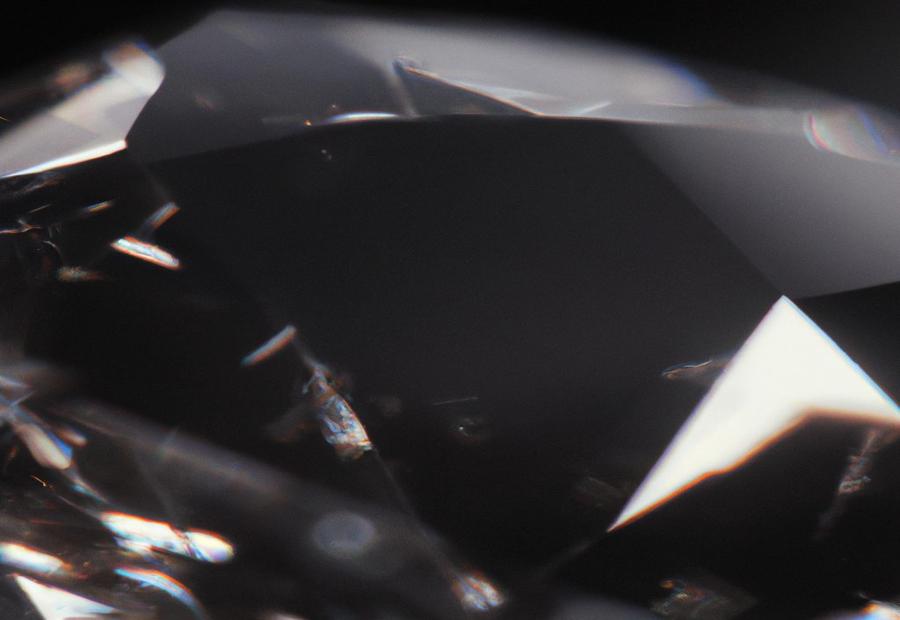
Photo Credits: Www.Lab-Grown-Diamond-Ring.Com by Bryan Gonzalez
Introduction:
Lab-grown diamonds, also called synthetic or cultured diamonds, are real diamonds. They have the same physical and chemical features as natural diamonds. Scientists make these diamonds in a lab using tech that mimics the natural diamond-growing process. People are drawn to lab-grown diamonds for their ethical and sustainable qualities, since they don’t need mining and don’t have the ethical worries connected to diamond mining.
There are two ways to make lab-grown diamonds: High Pressure-High Temperature (HPHT) and Chemical Vapor Deposition (CVD). The HPHT method puts a small diamond seed in a chamber and exposes it to high pressure and temperature. This lets carbon atoms form layers and grow around the seed. With the CVD method, scientists heat a substrate and introduce carbon-rich gases into a chamber. These gases break down and deposit carbon atoms on the substrate, which causes the diamond to form.
Lab-grown diamonds can be produced in a controlled environment. This leads to consistent quality and desirable characteristics. People can make lab-grown diamonds with specific color, clarity, and size. Additionally, testing methods and growth patterns can tell lab-grown diamonds apart from natural diamonds.
In summary, lab-grown diamonds are authentic diamonds made in a laboratory. They have the same properties as natural diamonds and are more sustainable and ethical. Thanks to their controlled production and customizable features, lab-grown diamonds are gaining popularity in the jewelry industry.
What are lab-grown diamonds?
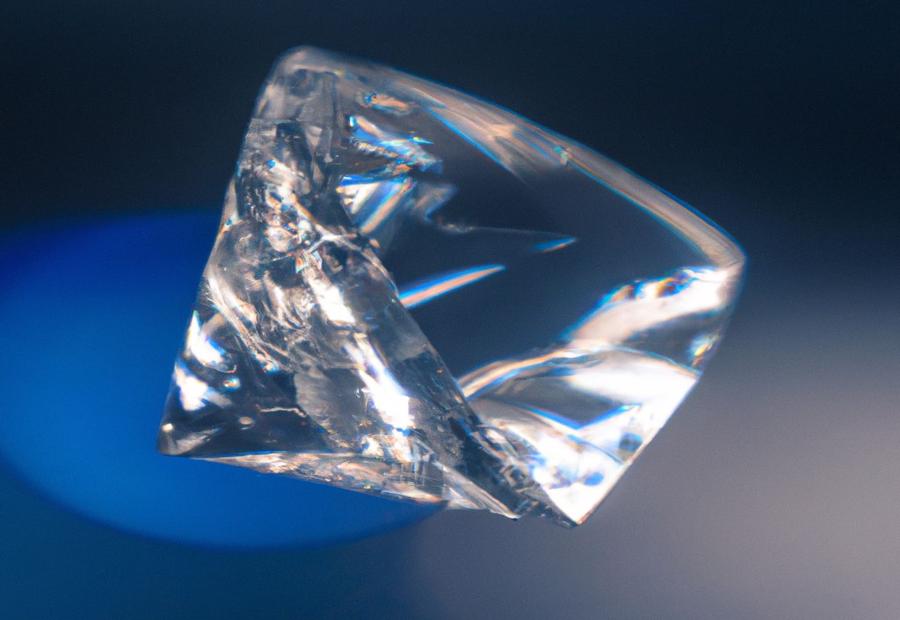
Photo Credits: Www.Lab-Grown-Diamond-Ring.Com by Jerry King
Lab-grown diamonds, also known as man-made or synthetic diamonds, are a fascinating alternative to natural diamonds. In this section, we will explore the definition and characteristics of lab-grown diamonds, while also comparing them to their natural counterparts. Get ready to uncover the intriguing world of lab-grown diamonds and discover the similarities and differences that make them a compelling choice in the jewelry market.
Definition and characteristics of lab-grown diamonds
Lab-grown diamonds have the same fire, brilliance, and hardness as natural diamonds. They consist of carbon atoms arranged in a crystal lattice structure, just like their naturally occurring counterparts. Plus, these synthetic gems can be produced with various colors, such as white, yellow, blue, and pink. And, they don’t have any flaws or impurities like natural diamonds. Lab-grown diamonds also provide an affordable option without sacrificing quality or beauty.
Furthermore, lab-grown diamonds are certified by esteemed gemological institutes like the Gemological Institute of America (GIA). This certification verifies their authenticity and makes them legitimate gemstones. It’s clear that the acceptance of lab-grown diamonds is growing.
On top of all this, lab-grown diamonds have ethical considerations. Unlike mined diamonds, which may be linked to environmental damage or human rights issues, lab-grown diamonds avoid these problems. Their production process has minimal environmental impact and does not add to mining activities. Additionally, they offer more traceability and transparency regarding their origin.
It’s also important to note that there has been an increasing demand for lab-grown diamonds lately. Jewelry brands are beginning to offer these diamonds alongside traditional options. This shift in the market shows a greater acceptance and understanding of lab-grown diamonds and their unique benefits.
Lab-grown diamonds: Nature’s not the boss anymore – you are!
Comparison with natural diamonds
Lab-grown diamonds and natural diamonds have the same chemical and physical properties. They both have similar brilliance, fire, and scintillation. This is because of their identical crystal structure and composition.
To compare the two better, it helps to make a table. It should have columns for the formation process, origin, environmental impact, ethical considerations, cost-effectiveness, and acceptance by gemological institutes.
| Formation Process | Origin | Environmental Impact | Ethical Considerations | Cost-Effectiveness | Acceptance by Gemological Institutes |
|---|---|---|---|---|---|
| Lab-grown diamonds | HPHT or CVD | Better for the environment | No association with human rights violations | Cost-effective | Gaining recognition |
| Natural diamonds | Form over millions of years in the Earth’s mantle | Environmental impact from mining | Possible association with human rights violations | Expensive | Traditional acceptance |
Lab-grown diamonds are made with either HPHT or CVD. Natural diamonds form over millions of years in the Earth’s mantle. The different formation methods mean they have different origins.
Lab-grown diamonds are more ethical and sustainable than natural diamonds. They are made in labs, so they are better for the environment. They don’t have any association with possible human rights violations.
In conclusion, lab-grown and natural diamonds have similar properties, but they differ in many ways. Lab-grown diamonds are gaining more recognition as people become more aware of them. They are expected to become more accepted in the industry.
The process of creating lab-grown diamonds
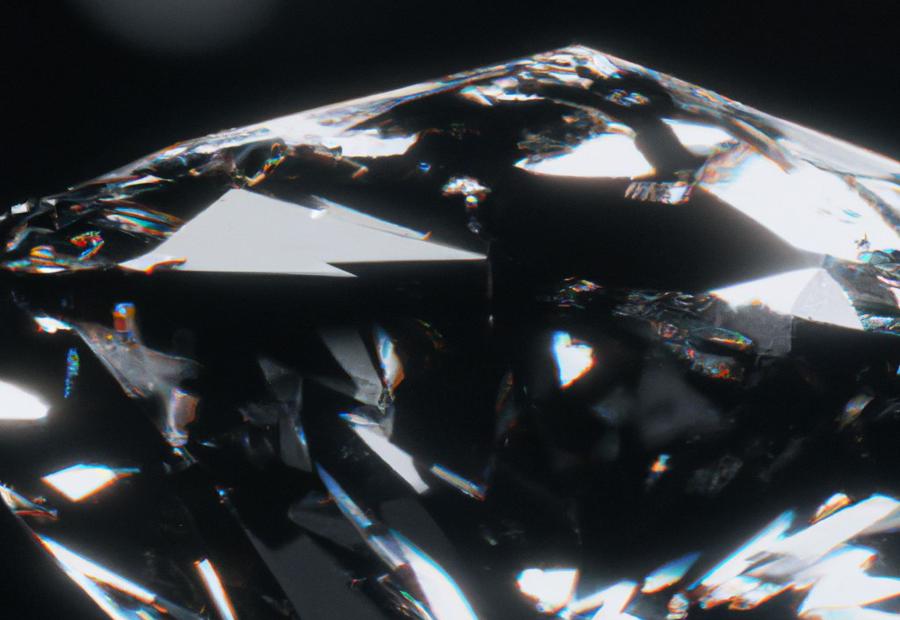
Photo Credits: Www.Lab-Grown-Diamond-Ring.Com by Ronald Walker
Lab-grown diamonds have been gaining popularity as alternatives to naturally mined ones. In this section, we will dive into the fascinating process of creating lab-grown diamonds. We’ll explore the High-Pressure High-Temperature method and the Chemical Vapor Deposition method, shedding light on how these techniques allow scientists to manufacture diamonds in controlled environments. Prepare to uncover the intricate steps and scientific advancements behind the creation of these remarkable gemstones.
High-Pressure High-Temperature method
The High-Pressure High-Temperature method is a way to craft lab-grown diamonds.
- Step one: Put a diamond seed in a chamber with carbon-rich gases.
- Step two: Blast the chamber with pressure and heat like in the Earth’s mantle.
- Step three: Carbon atoms pile up on the seed, growing it into a diamond.
These lab-grown diamonds mimic natural ones in many aspects, such as their chemical composition and crystal structure. However, this method takes special equipment and knowledge. Get your sparklers from reliable sources that have certified lab-grown diamonds.
It’s time to heat up your life with lab-grown diamonds! Forget the Chemical Vapor Deposition method.
Chemical Vapor Deposition method
Chemical Vapor Deposition (CVD) is a method used to make lab-grown diamonds. A diamond seed or substrate is placed in a sealed chamber with carbon-containing gases. Heat is applied, causing the carbon atoms to break apart and deposit onto the diamond seed. Layer by layer, this creates a diamond identical to a natural one.
- First, the diamond seed is placed in the chamber.
- Then, carbon-containing gases are added.
- The chamber is heated to over 700° Celsius.
- At this high temperature, the gases break apart, releasing carbon atoms.
- These atoms stick to the seed and form diamond layers.
There are numerous advantages of CVD. It allows for precise control of the diamond’s growth. Plus, it can be done at low pressure and temperature compared to other methods like HPHT. This makes it more eco-friendly.
GIA and other gemological institutes have accepted CVD lab-grown diamonds. They look and act like natural diamonds, but can be told apart with special equipment.
In conclusion, CVD is an effective and ethical way to make lab-grown diamonds. It’s cost-effective and environmentally friendly. Plus, awareness and understanding of these diamonds is growing – they’re becoming more popular in the jewelry market. So, if you want a diamond that sparkles brighter than the sun, CVD lab-grown diamonds are the way to go!
Properties and quality of lab-grown diamonds
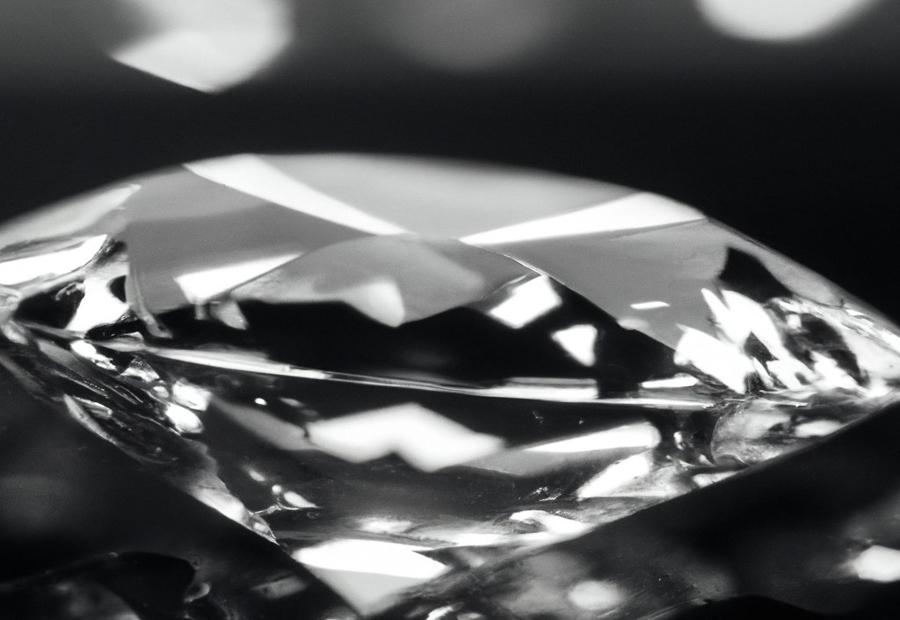
Photo Credits: Www.Lab-Grown-Diamond-Ring.Com by Jose Moore
Lab-grown diamonds have revolutionized the world of jewelry, but how do they stack up against their natural counterparts? In this section, we’ll explore the properties and quality of lab-grown diamonds, diving into their striking similarities to natural diamonds and the certification and acceptance they’ve gained from reputable gemological institutes. Get ready to uncover the fascinating world of lab-grown diamonds and discover why they’re making waves in the jewelry industry.
Similarities to natural diamonds
Lab-grown diamonds boast the same chemical composition, physical and optical properties, and grading standards as natural diamonds. This makes them almost indistinguishable from their natural counterparts. However, they don’t have the same historical significance or rarity.
Benefits of lab-grown diamonds include:
- Ethical production: No reliance on mining practices linked to human rights and environmental issues.
- Environmental impact: Lower energy and water usage than traditional diamond mining.
- Cost-effectiveness: On average, 30-40% cheaper than natural diamonds.
The striking similarities and unique advantages of lab-grown diamonds have made them a desirable choice among those looking for an ethical and sustainable jewelry option.
Certification and acceptance by reputable gemological institutes
Reputable gemological institutes have a significant role in certifying and accepting lab-grown diamonds. They verify its authenticity and assess its quality. Tests are conducted on factors such as color, clarity, cut, and carat weight. This certification provides consumers with assurance that their purchase of lab-grown diamonds is legitimate.
The certification processes may vary among institutes, yet the goal remains the same: to provide accurate assessments for lab-grown diamonds. Obtaining certification from reputable gemological institutes helps establish trust and credibility within the industry.
Through rigorous testing, these institutes have recognized the similarities between lab-grown and natural diamonds, leading to their acceptance. This has transformed public perception and acceptance of lab-grown diamonds as a genuine alternative.
Benefits of lab-grown diamonds
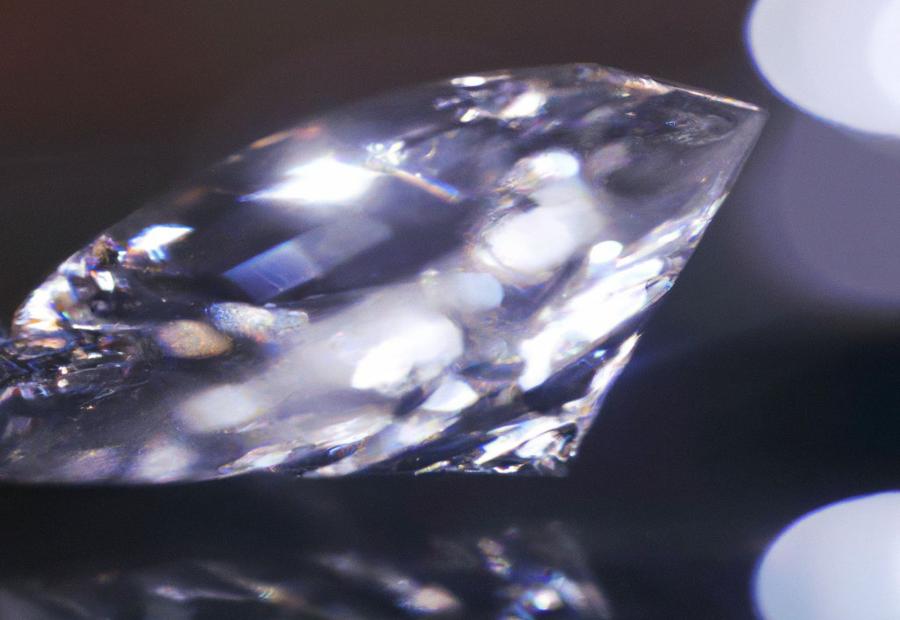
Photo Credits: Www.Lab-Grown-Diamond-Ring.Com by Christopher White
Discover the remarkable benefits of lab-grown diamonds, including ethical considerations, environmental impact, and cost-effectiveness. Explore how these synthetic gems present a sustainable and responsible alternative to natural diamonds, shedding light on their growing popularity in the market. Uncover the facts, figures, and events surrounding lab-grown diamonds, highlighting why they are a viable and conscientious choice for the modern consumer.
Ethical considerations
Lab-grown diamonds are a great option for those who care about ethical considerations when buying diamonds. They’re created using advanced technology, without needing to mine – which can cause social and environmental issues.
The growth of lab-grown diamonds uses a process that eliminates the ethical problems linked to natural diamond mining. By using HPHT or CVD, these diamonds are made in labs under controlled conditions. This ensures no one is exploited or local communities and ecosystems harmed.
Lab-grown diamonds are conflict-free with a transparent supply chain. Consumers can be sure their purchase doesn’t fund human rights abuses or arm conflicts.
Lab-grown diamonds also promote fair labor practices. The production happens in monitored labs, with safe working conditions and fair wages.
These ethical advantages make lab-grown diamonds a great choice for people who value transparency and responsible sourcing. With more awareness and demand for ethically produced goods, lab-grown diamonds are a practical and socially responsible replacement for natural diamonds.
Lab-grown diamonds: making your conscience sparkle – with less drama for Mother Earth.
Environmental impact
Lab-grown diamonds have a much lower environmental impact than natural diamonds. The process to make them, like HPHT and CVD, uses managed settings and renewable energy sources. This decreases the carbon footprint of diamond mining and extraction. Also, there is no need for land disruption or water pollution from traditional diamond mining methods.
Lab-grown diamonds are better for the conservation of natural resources. Unlike natural diamonds, which require an abundance of energy and water to be extracted, lab-grown diamonds can be produced with much less. This lessens the strain on our ecosystems and helps stop climate change.
Plus, the creation of lab-grown diamonds does not include damaging mining techniques. This includes deforestation or taking away animal dwellings. Because of all this, lab-grown diamonds are a more sustainable pick for people who care about the environment.
Cost-effectiveness
Lab-grown diamonds are gaining popularity due to their cost-effectiveness across multiple aspects. Price affordability, pricing stability, customization options, reduced maintenance costs, and value retention are all top benefits. Furthermore, lab-grown diamonds are ethically produced and have minimal environmental impact.
This makes them a favorable choice for many consumers. As they are more affordable and offer customization options, they are a great option for those seeking unique and personalized designs.
Lab-grown diamonds are exploding onto the market, making traditional diamonds obsolete!
Availability and market trends for lab-grown diamonds
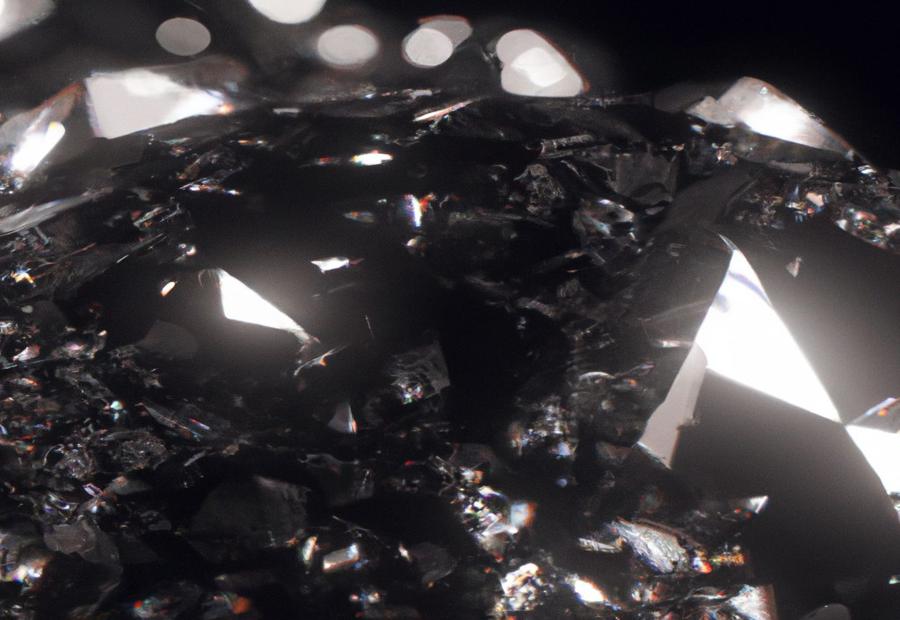
Photo Credits: Www.Lab-Grown-Diamond-Ring.Com by Harold Rivera
As lab-grown diamonds continue to make waves in the market, it’s crucial to understand their availability and current market trends. In this section, we will uncover the increasing popularity and demand for lab-grown diamonds, as well as explore the jewelry brands that are now offering consumers the option to embrace these innovative alternatives. Get ready to dive into the fascinating world of lab-grown diamonds and discover the changing landscape of the diamond industry.
Increasing popularity and demand
Lab-grown diamonds are becoming increasingly popular. These diamonds are made in a laboratory, not mined from the earth. They possess the same physical and chemical characteristics as natural diamonds, so they look just the same. Advanced technology creates them, like natural diamonds. This means they are just as brilliant and hard-wearing.
Reputable gemological institutes like GIA certify and accept lab-grown diamonds. This means they meet industry standards. Buyers can be sure of this when purchasing.
The environmental impact of lab-grown diamonds is another reason for their popularity. Unlike mining, which causes deforestation and pollution, lab-grown diamond production has a much lower environmental impact. This appeals to consumers who prioritize sustainability and ethical practices.
Jewelry brands offering lab-grown diamond options
Lab-grown diamonds are gaining fame in the jewelry industry. Established brands are providing consumers with ethical and eco-friendly alternatives to natural diamonds. They offer rings, necklaces, earrings, and bracelets with lab-grown diamonds.
These brands ensure the quality and authenticity of these pieces. They obtain certifications from reputable gemological institutes. They also recognize the increasing demand for lab-grown diamonds among shoppers.
So, to meet this demand, they are continuously expanding their collections with more lab-grown diamond pieces. This way, customers have access to sustainable and ethically sourced diamond jewelry without sacrificing design or quality.
Perception and acceptance of lab-grown diamonds
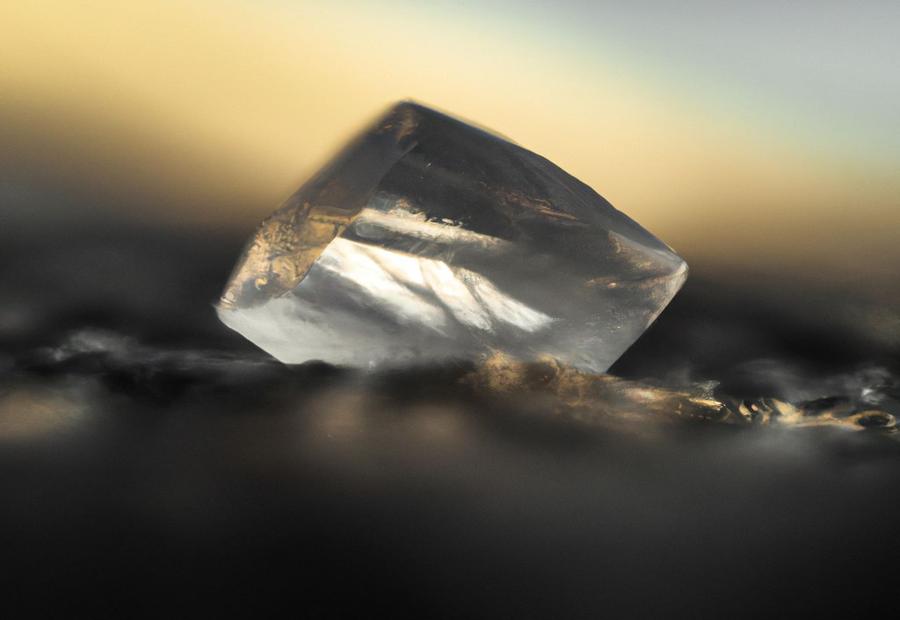
Photo Credits: Www.Lab-Grown-Diamond-Ring.Com by Matthew Taylor
Perception and acceptance of lab-grown diamonds: Unveiling consumer awareness, expert opinions, and industry acceptance.
Consumer awareness and understanding
Lab-grown diamonds are becoming more popular, due to their many advantages. One key benefit is that they are eco-friendly. Natural diamonds are mined, which causes harm to the environment. But lab-grown diamonds don’t contribute to this damage. More people understand the environmental impact of diamond mining – so this is an important factor.
Lab-grown diamonds are also cheaper than natural diamonds. This makes them accessible to many consumers who couldn’t afford natural diamonds. As people learn about the price differences between lab-grown and natural diamonds, more people are choosing the former.
Many jewelry brands now offer lab-grown diamond options. This is because of the growing consumer awareness of the benefits of lab-grown diamonds. As people become informed about the ethical and environmental advantages of these diamonds, they are actively seeking them out.
Overall, as people understand more about lab-grown diamonds, they are picking them over natural diamonds. With their ethical and eco-friendly attributes, as well as their affordability, lab-grown diamonds are becoming a preferred choice for conscious jewelry purchases.
Expert opinions and industry acceptance
Industry experts have come to recognize lab-grown diamonds as possessing similar physical and optical properties to natural ones. This has led to an increase in brands offering lab-grown diamond options, showing a change in consumer demand and acceptance.
Gemologists and industry professionals value the ethical considerations associated with lab-grown diamonds, such as reduced environmental impact and conflict-free sourcing. The cost-effectiveness of lab-grown diamonds compared to natural diamonds is also a factor in their popularity among customers seeking high-value alternatives.
At first, there was some doubt surrounding the authenticity and quality of lab-grown diamonds. But, with advances in technology and research, the industry’s confidence in them has grown. Experts now view them as a genuine diamond option, with many certifications attesting to this.
The acceptance of lab-grown diamonds in the jewelry market has been greatly influenced by individual values and preferences. As consumers become more aware of the benefits of lab-grown diamonds, a surge in demand has been seen. This demonstrates the growing perception of lab-grown diamonds within the industry.
Choosing between lab-grown diamonds and natural diamonds
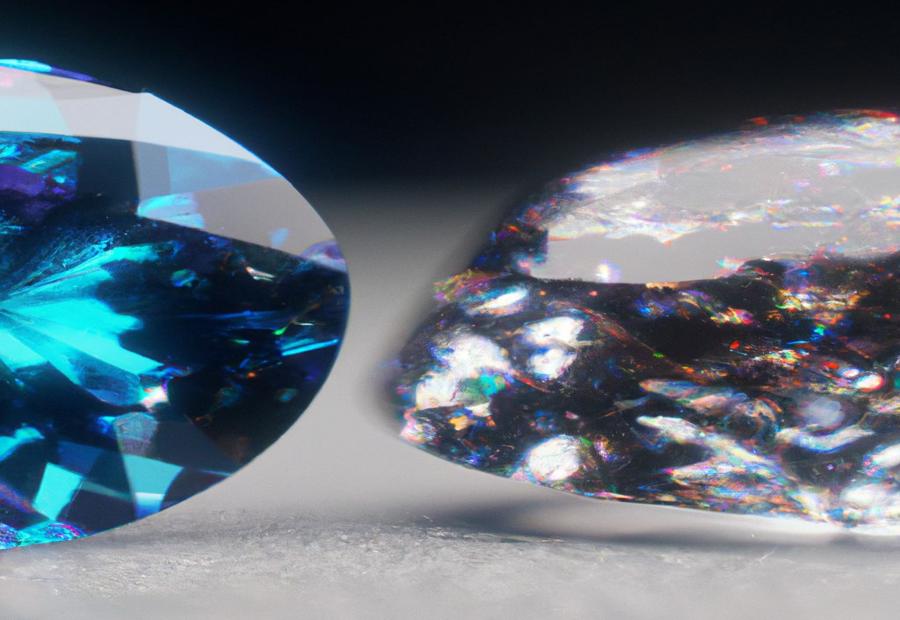
Photo Credits: Www.Lab-Grown-Diamond-Ring.Com by Donald Wright
When deciding between lab-grown diamonds and natural diamonds, understanding the factors that influence our choice becomes essential. Personal preferences and values, budget considerations, and resale value considerations are all significant elements to consider. Let’s dive into each of these aspects to help you make an informed decision about which type of diamond aligns best with your needs and preferences.
Personal preferences and values
When it comes to diamonds, personal style and values are key. Lab-grown diamonds offer a wide range of options, so you can find one that fits your unique sense of style. Whether you go classic or modern, lab-grown diamonds have you covered.
Ethics are also important. Lab-grown diamonds are often seen as a more ethical choice than natural diamonds. You won’t have to worry about environmental and social issues linked to mining. If sustainability and human rights are a priority, lab-grown diamonds are a good choice.
Value alignment matters, too. People who value innovation and technological advancements may appreciate the cutting-edge processes used in lab-grown diamond creation. The use of science and technology may be meaningful to those who appreciate advancements in many fields.
Symbolic meaning can be important for many people. Natural diamonds have long symbolized commitment and eternity, and lab-grown diamonds can do the same. People who value the sentiment more than the origin may prefer lab-grown diamonds.
Plus, budget is a factor. Lab-grown diamonds tend to be more affordable than natural diamonds of similar quality. This means people with different financial circumstances can own a beautiful diamond.
To make an informed decision, consider all factors: personal preferences and values, style, ethics, values, symbolism, and budget. Ultimately, go with what works for you!
Budget considerations
Comparing the prices of lab-grown and natural diamonds can give insight into budgeting. Lab-grown diamonds are significantly cheaper per carat. And the price stays the same across different sizes. Natural diamonds increase in cost with carat weight.
Lab-grown diamonds usually have a higher resale value than other alternatives, like synthetic or treated diamonds. Investing in a lab-grown diamond can be smart financially.
When buying diamond jewelry, it’s important to make informed decisions. Comparing lab-grown and natural diamonds helps consumers find a quality, beautiful diamond at a reasonable price. Don’t miss out on owning a gorgeous piece of jewelry without breaking the bank.
One last thing to think about: Lab-grown diamonds may not hold their value like natural diamonds. But hey, at least you won’t have any haunted jewelry!
Resale value considerations
Lab-grown diamonds are real and have a resale value. That’s worth knowing for anyone who may want to sell their diamond jewelry. Here are five things that can influence that value:
- Rarity – Natural diamonds are rarer.
- Demand – Market trends and consumer preferences matter.
- Perception – How industry experts and consumers view these diamonds.
- Brand – Jewelry brands with reputations can increase resale value.
- Certification – Accurate appraisals of quality are key.
It’s important to consider these factors when buying. Since lab-grown diamonds are new, there may be details about their resale value yet to be discovered.
Conclusion
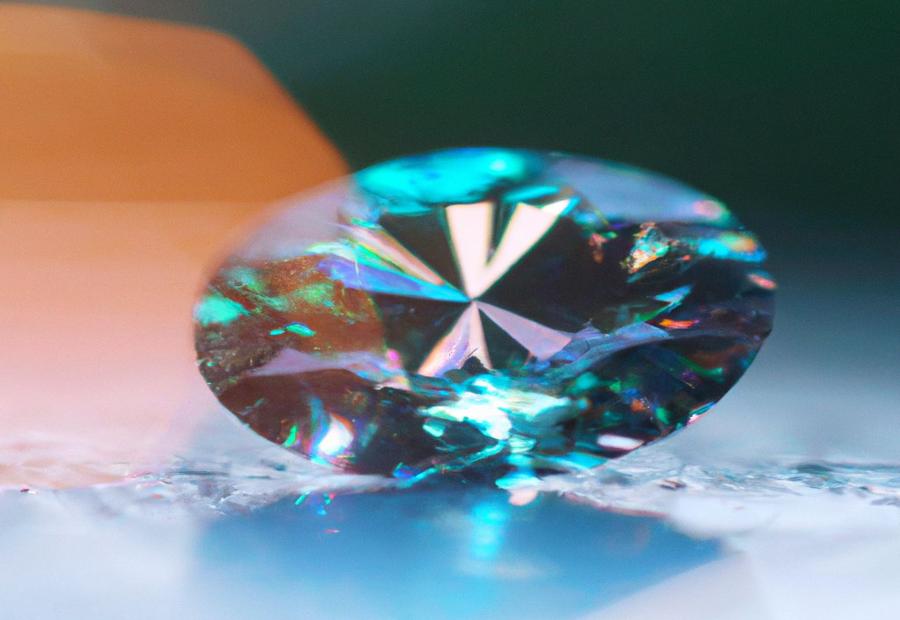
Photo Credits: Www.Lab-Grown-Diamond-Ring.Com by Terry Allen
Lab grown diamonds are real! Just like natural diamonds, they have the same physical, chemical and optical characteristics. Scientists have made great progress in technology and can now create diamonds indistinguishable from the natural ones. This is done through a process called Chemical Vapor Deposition (CVD) or High Pressure High Temperature (HPHT). These replicas replicate the conditions of how natural diamonds are formed in the Earth’s crust.
Lab grown diamonds have several benefits. Firstly, they are more sustainable and ethical. As they are produced in a controlled environment, it reduces the environmental impact and avoids ethical issues of mining. Also, they offer clarity and more color options, as they can be manipulated to achieve certain characteristics. Plus, they are cheaper than natural diamonds, making them accessible to more people.
To sum it up, lab grown diamonds are real. With CVD and HPHT, they share the same crystal structure and hardness with natural diamonds. They are sustainable, ethical and affordable, making them an attractive choice in the diamond market.
Some Facts About “Are Lab Grown Diamonds Real Diamonds?”:
Lab-grown diamonds are chemically, physically, and optically the same as mined diamonds. (Source: PureWow)
Lab-grown diamonds are measured against the “4 Cs” (clarity, color, cut, and carat weight) just like natural diamonds. (Source: Team Research)
Lab-grown diamonds offer a more sustainable and ethical alternative to mined diamonds. (Source: Nathan Alan Jewelers)
Lab-grown diamonds cost about 40% less on average than mined diamonds. (Source: PureWow)
Lab-grown diamonds are gaining popularity, especially among younger consumers who value sustainability. (Source: Team Research)
FAQs about Are Lab Grown Diamonds Real Diamonds?
Are lab grown diamonds real diamonds?
Yes, lab grown diamonds are real diamonds. They have the same physical, chemical, and optical properties as natural diamonds. They can even be certified by reputable gemological institutes like GIA and IGI.
What is the price differential between lab created diamonds and natural diamonds?
Lab created diamonds are generally 30-50% less expensive than natural diamonds. This price differential allows buyers to purchase larger stones for the same price.
Are lab grown diamonds better for the environment?
Yes, lab grown diamonds have a lower environmental impact compared to natural diamonds. They use less electricity, water, and produce lower carbon emissions during production.
How can I determine if a diamond is lab grown or natural?
To determine if a diamond is lab grown or natural, reputable sources are required to clearly disclose the origin of the gem. Additionally, expert jewelers may need specific equipment to differentiate between the two.
Do lab grown diamonds have the same market value as natural diamonds?
Lab grown diamonds may not have the same resale value as natural diamonds. The market value of lab grown diamonds has dropped in recent years and may not match the value of natural diamonds on the secondary market.
Where can I find reputable jewelry brands that offer lab grown diamonds?
There are several reputable jewelry brands that offer lab grown diamonds, such as Clean Origin, VRAI, and Blue Nile. These brands prioritize sustainability and transparency in their production processes.

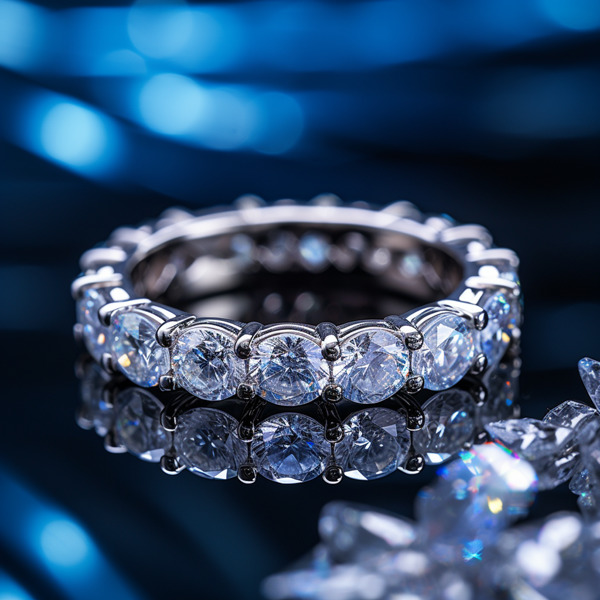
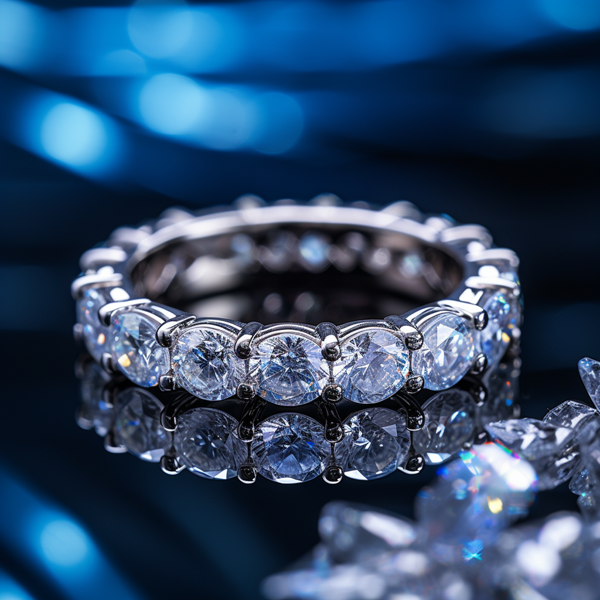
Leave a Reply